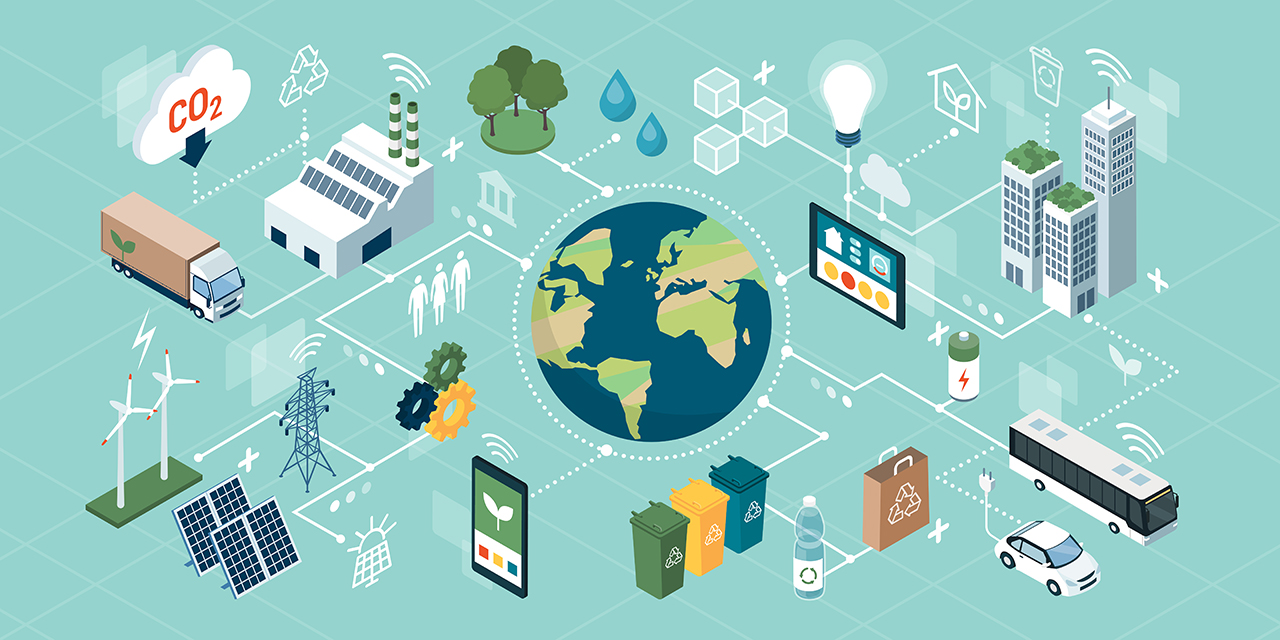Edge computing is an Internet of Things (IoT) technique that helps solve the challenges associated with latency and inefficiency when transferring data between millions of connected devices and the cloud or data center. The main idea behind edge computing is management of data at the point where it’s generated, rather than relying on upload to a centralized resource where data has traditionally been processed. As the Internet of Things grows, edge compute is increasingly critical to create efficiencies in the gathering, processing and routing of data.
Edge compute is approaching a tipping point. Today, according to analyst firm Gartner, less than 10 percent of enterprise data is created and processed at the edge. But by 2025, Gartner expects that number to reach 75 percent.
1
The importance of edge computing can be summarized by three key points: Routing efficiency, reduced latency and data management.
Routing efficiency: The vast majority of devices producing data in an IoT application are located at the “edge” of the network, not within a data center that is designed to process high volumes of data. Routing all data back and forth between the edge and the data center is inefficient. It makes more sense to process data in close physical proximity to the IoT solution and determine whether it needs to be uploaded or not.
Reduced latency: In many IoT applications, data that must be processed quickly so protective action can occur immediately, if necessary. For example, latency issues in a mission critical industrial application could result in assets like tanks or pumps over-filling, running dry or failing.
Data management: While some of the data generated by millions of distributed devices might need to be stored, processed and analyzed in a data center or in the cloud, much of it doesn’t. For example, while it may be important in some applications to send checkpoint data about whether a device is operating normally, for many applications it is only important to route data to headquarters when the device is operating outside its norm.
In this blog, we will explore some of the benefits of edge computing and introduce Digi’s solution portfolio for building edge compute into your IoT deployment.
Managing edge data volume and bandwidth issues

A lot of edge-derived data simply indicates that everything is running smoothly — commonly known as “heartbeat data.” An example of this might be a pump or motor running at the same RPM rate 99.999% of the time. It may be of minimal value collecting millions of identical data readings as the months tick by. However, if outlier data appears, that should be recognized and acted upon as quickly as possible to avoid a potential catastrophe. This is the kind of situation where edge computing is invaluable.
In most cases it’s most efficient to have computing tasks performed at the network edge, near the events and processes that are taking place. As one industry observer said, referring to the age-old adage about the difficulty of finding a needle in a haystack, edge computing “allows us to make the data ‘haystacks’ smaller, and hence makes it more likely to find the actionable information ‘needle’ much more efficiently.” 2
Fortunately, device intelligence and computing power are increasing, "smart" devices now have greater functionality for handling processes that formerly required the assistance of a traditional computing stack. For example, smart edge devices can be programmed with intelligence to decipher data otherwise requiring human intervention, then send it onward to the next recipient.
Growing data is not the only challenge driving the growth of edge computing. As IoT applications multiply, there is always a finite amount of available bandwidth. Edge computing allows devices to make decisions autonomously, helping to absorb and manage the growing amount of processing that invariably needs to be done.
Benefits of edge computing
Here are some key benefits that make edge computing attractive for a range of applications:
- Reduced latency: Edge computing allows a faster response to local events because the data does not need to travel back and forth from the edge to the cloud. With edge computing, latency can be reduced to near zero.
- Reduced cost: The reduced flow of data over the network results in lower networking costs, especially for wireless cellular connections.
- Enhanced security and privacy: With edge computing, sensitive data, such as medical images, need not leave the device. And the application can establish rules and encryption to identify and transfer only specific, required data securely.
- Ability to operate offline: An edge-compute device can collect, store and process data on its own. A permanent connection to the network is not required. In addition to supporting lower latency, the benefits can include battery management for edge devices, as well as security.
- Programmable: Programmable devices extend the service life of capital equipment because they can evolve as the hardware they are embedded into evolves, reflecting new applications, new functionality and advanced security capabilities.
Edge computing use cases

Technically speaking, edge computing is already in use all around us, from the fingerprint readers on smartphones to real-time traffic monitoring at intersections. The following use cases represent just a sample of the growing spectrum of edge computing applications.
- Adaptive diagnostics: Machine and equipment uptime can be improved, cutting service expenses and reducing warranty costs. Edge-compute-generated error codes, combined with historical repair information can also provide context for technicians, shortening the time needed to troubleshoot problems and complete repairs.
- Off-shore oil drilling platforms: Based on its value, data is stored for record keeping, and performance analysis is recognized and retained. Edge devices can perform safety monitoring and shut down equipment automatically when preset limits are exceeded.
- Manufacturing: Industrial sensors monitor factory equipment to maintain performance settings, increase efficiency and predict repair needs.
- Smart Cities: Traffic cameras and signals improve safety and traffic flow. Public buildings can be monitored for greater efficiency in lighting, heating and more.
- Healthcare: Wearable devices store information such as heart rate and temperature, and provide reminders for medication. Other medical wearables send specific data to the patients physician for analysis or send alerts, in the event that a patient has fallen.
- Agriculture: Farmers use sensors to track moisture levels in the soil and other field conditions and then have the application kick off automated processes and send any critical data to a management interface such as Digi Remote Manager® for analysis.
The most dramatic example of real-time edge processing will come with the advent of connected vehicles and autonomous vehicles, where near-zero latency is critical. Real-time decision-making is an essential capability in this environment, where delays of even milliseconds could be a matter of life or death. Self-driving cars will also log information and regularly connect to the cloud to upload performance data and download software updates.
Edge computing solutions
To develop and utilize edge compute to its full advantage, teams deploying IoT applications need supporting hardware, software and tools. For example:
Edge computing is destined to become ubiquitous to manage the cost, enormous data volumes and scalability of mission critical applications, and teams that are developing and deploying these applications must work with a partner that can provide the end-to-end support needed – from the right tools to the deep experience in the IoT.
Wondering how to build edge intelligence into your design? Digi Wireless Design Services can help. Contact us to get the assistance you need.
1 Rob van der Meulen, “Edge computing promises near real-time insights and facilitates localized actions,” Smarter with Gartner, October 3, 2018
2 Stephanie Overby, How to explain edge computing in plain English, The Enterprisers Project, July 22, 2019